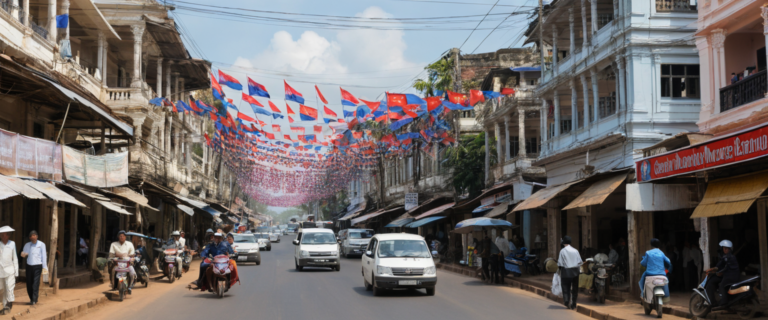
The Kingdom of Cambodia, officially independent since November 1953, has made significant strides in economic development, but poverty remains a challenge, with much of the economy still reliant on agriculture. As one of the relatively poorer nations in Southeast Asia, Cambodia has shown a steady improvement in its GDP, with notable growth over recent years.
Cambodia’s GDP in 2016 was $20.017 billion, reflecting an impressive growth rate of 6.88%. The country’s per capita GDP stood at $1,140 in 2016, marking a 5.19% increase compared to the previous year. In June 2017, Cambodia achieved a significant milestone by graduating from least developed country status to lower-middle-income status. This change reflects the country’s successful economic reforms and growth trajectory.
The nation’s population in 2015 was approximately 15.4 million, with a youthful demographic. More than half of the population is under the age of 25, creating a dynamic labor force that drives Cambodia’s economy. With the country’s transition from a mixed-planned to a market-oriented economy, Cambodia has attracted foreign investment and enhanced its position in regional and global trade networks.
Cambodia operates as a constitutional monarchy with a multi-party democracy. The King of Cambodia serves as the ceremonial head of state, while the Prime Minister, who is appointed by the King, holds executive authority. Currently, King Norodom Sihamoni presides over the country, while the Prime Minister, Hun Sen, has been in power since 1985.
The National Assembly, Cambodia’s legislative body, is responsible for enacting laws, with members elected every five years. Additionally, the Senate, which reviews bills passed by the National Assembly, has both appointed and elected members serving six-year terms.
Cambodia’s political system is characterized by a multi-party framework, with the Cambodian People’s Party (CPP) being the dominant political force in the country. Over time, the number of active political parties has fluctuated, but the CPP has maintained a strong grip on power in recent years.
Cambodia’s economic ties with China have deepened significantly, particularly following Cambodia’s membership in the ASEAN bloc and the China-ASEAN Free Trade Area. Bilateral trade between the two countries has surged, with trade figures reaching $4.43 billion in 2015 and continuing to grow in subsequent years. In addition to trade, China has made substantial investments in Cambodia, particularly in infrastructure and construction, with Chinese companies securing multi-billion-dollar contracts in the country.
Cambodia’s GDP in 2019 was $26.1 billion, reflecting steady growth despite the challenges posed by the COVID-19 pandemic, which led to a minor contraction in 2020. Nevertheless, economic recovery is expected, with growth projections of 3.6% in 2021 and 10.2% in 2022. The government’s efforts to implement economic reforms and attract foreign investment are essential drivers of the nation’s economic revival.
Cambodia’s economy is driven by key industries such as garment manufacturing and tourism. The garment sector, which accounts for over 80% of Cambodia’s exports, is a significant contributor to the country’s foreign exchange earnings. Major global brands, including Nike and Adidas, source products from Cambodia, making it a key player in the global apparel industry.
The tourism sector is another vital component of the Cambodian economy, with the world-renowned Angkor Wat temple complex drawing millions of visitors each year. Tourism-related businesses, including hospitality, transportation, and retail, continue to be important sources of income and employment.
Additionally, sectors such as construction, agriculture, and services are growing rapidly, with Cambodia becoming an attractive hub for manufacturing due to its low labor costs and favorable investment environment.
- ASEAN Membership: As a member of ASEAN, Cambodia has access to a large consumer market and numerous trade benefits.
- WTO Membership: Cambodia’s membership in the WTO enhances its integration into the global trading system.
- Investment Incentives: The Cambodian government offers incentives such as tax breaks and streamlined investment processes.
- Low Labor Costs: Cambodia boasts one of the lowest labor costs in Asia, making it a favorable location for labor-intensive industries.
- Growing Workforce: A youthful and dynamic workforce provides a strong foundation for sustained economic growth.
Cambodia’s economic landscape is evolving rapidly, with key industries such as manufacturing, garment production, tourism, and construction driving growth. The country’s favorable investment environment, low labor costs, and dynamic workforce present ample opportunities for businesses looking to expand in Southeast Asia.
For companies in the land lease and manufacturing sectors, Cambodia’s growing economy and strategic location within ASEAN offer valuable prospects for long-term growth and investment. As the country continues its upward trajectory, it remains an attractive destination for investors seeking to tap into emerging markets in Asia.
